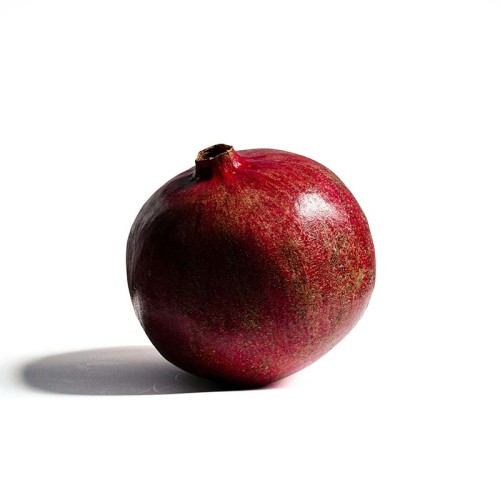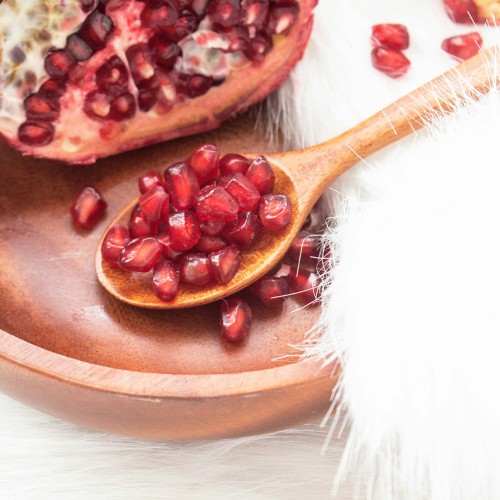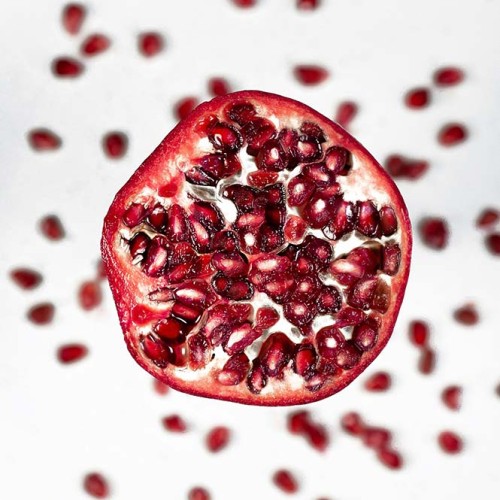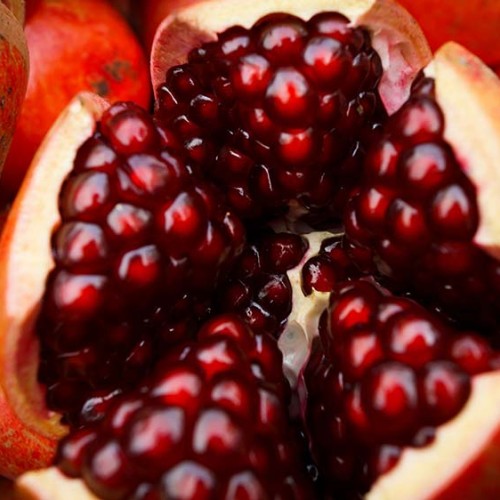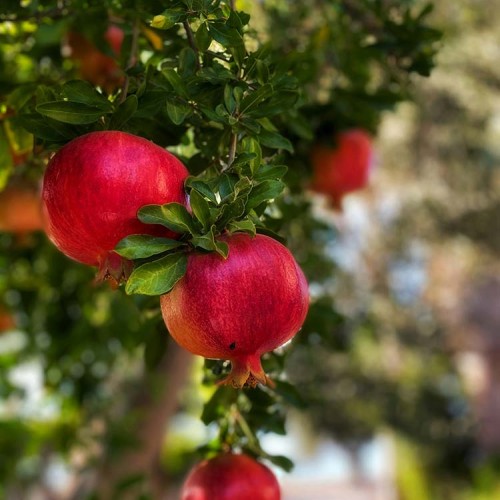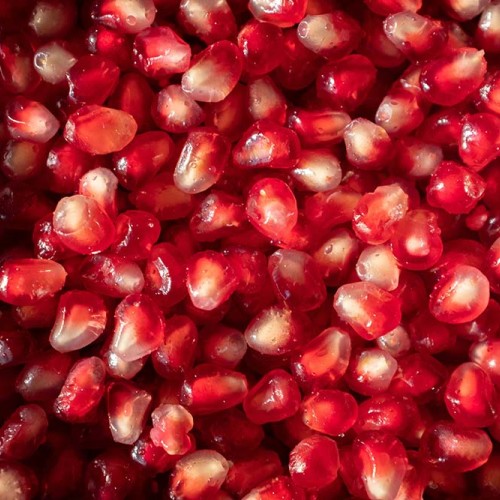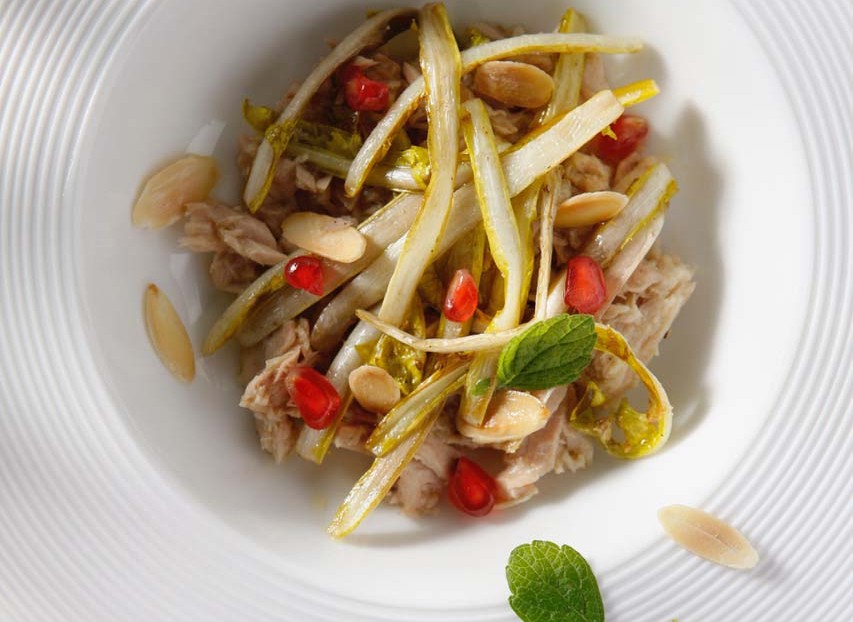Fruit of the year 2024 : The Pomegranate
The pomegranate (Punica granatum) is a fruit-bearing deciduous shrub in the family Lythraceae, subfamily Punicoideae, that grows between 5 and 10 m (16 and 33 ft) tall. The pomegranate is rich in symbolic and mythological associations in many cultures.
Young pomegranate tree in Side, Turkey
The pomegranate was thought to have originated from Afghanistan and Iran before being introduced and exported to other parts of Asia, Africa, and Europe. It was introduced into Spanish America in the late 16th century and into California by Spanish settlers in 1769. They are widely cultivated throughout West Asia and Caucasus region, South Asia, Central Asia, north and tropical Africa, the drier parts of Southeast Asia, and the Mediterranean Basin. The fruit is typically in season in the Southern Hemisphere from March to May, and in the Northern Hemisphere from September to February.
As intact sarcotestas or as juice, pomegranates are used in baking, cooking, juice blends, meal garnishes, smoothies, and alcoholic beverages, such as cocktails and wine.
Red-purple in color, the pomegranate fruit husk has two parts: an outer, hard pericarp, and an inner, spongy mesocarp (white "albedo"), which comprises the fruit inner wall where seeds attach. Membranes of the mesocarp are organized as nonsymmetric chambers that contain seeds which are embedded without attachment to the mesocarp. Pomegranate seeds are characterized by having sarcotesta, thick fleshy seed coats derived from the integuments or outer layers of the ovule's epidermal cells. The number of seeds in a pomegranate can vary from 200 to about 1,400.
Botanically, the edible fruit is a berry with seeds and pulp produced from the ovary of a single flower. The fruit is intermediate in size between a lemon and a grapefruit, 5–12 cm (2–4+1⁄2 in) in diameter with a rounded shape and thick, reddish husk.
